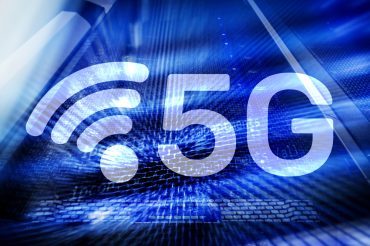
Having a communications network to run smart street light initiatives means that additional smart city programs do not need to incur that foundational cost. So, building out more innovative smart city programs becomes more realistic.
When exploring urban transformation, a key element often overlooked in the burgeoning IoT landscape is smart street lighting. The utility of such lights extends beyond mere illumination—they offer a gateway to innovative IoT deployments that redefine urban living.
For cities that want to create an entry-level program, smart street lights can act as a ‘foundation’ for other large-scale, secure, outdoor communications networks and other IoT initiatives. Smart street lighting programs have been deployed across cities around the globe – from Paris to Chicago and Singapore to Miami. Smart streetlights can be the backbone for smart cities–and this article explores how municipalities can use this technology to achieve broader smart city success beyond lighting systems.
Lighting “Glows” Up
Global organizations consistently earmark IoT as a pivotal IT priority. Particularly, smart street lighting emerges as a cornerstone, laying the foundation for broader IoT applications in cities. This surge isn’t just speculative. According to research from Wi-SUN Alliance, between 2017 and 2022, the adoption of street lighting IoT use cases expanded from 61% to 72%, exhibiting an undeniable upward trajectory.
Driving Sustainability Through Smart Street Lighting
These lights are not merely an ‘on/off’ solution. They bolster energy management, enabling cities to optimize power consumption while enhancing public safety.
More importantly, if cities embrace the right tech stack for their street lighting initiatives, the network on which it runs becomes a powerful outdoor wireless communications network that can support even more transformative smart city programs. This facilitates the seamless deployment of diverse IoT applications, from monitoring environmental metrics to integrating smart traffic sensors.
This network, once established, allows for a spectrum of applications to share the communication infrastructure, optimizing costs and creating efficient IoT ecosystems. As cities progressively incorporate IoT initiatives like street lighting, they don’t just enhance urban functionalities—they craft an eco-friendlier, secure environment that draws potential residents. And, with smart city programs that improve the quality of life for residents, spikes in economic development follow.
See also: 6G Holographic City Will Improve Urban Planning
A Glimpse Worldwide: The City of London
For tangible evidence of this transformative potential, one needn’t look further than the historic City of London. In its pursuit to regulate soaring energy expenditures and foster public safety, the city overhauled its dated lighting system. This entailed revamping around 12,000 lights, spanning streets, walkways, landmarks, bridges, and tunnels.
The nascent project’s impact is already tangible, recording savings of approximately 80,000 kWh in 2022. More intriguingly, this singular initiative of upgrading street lights snowballed into broader smart functionalities. Now, the city has set the stage for smart features such as monitoring Thames’s lifebelts, integrating environmental sensors, and piloting zero-emission programs. It’s a testament to the profound potential of commencing the smart city journey with versatile street lights.
Economics & Ecology: The Twin Benefits
For any urban project, cost-effectiveness is paramount. Utilities and governments must invest strategically in smart utility programs; with pilot initiatives and targeted funding, these entities can drive the IoT revolution forward.
A decade ago, when interest in smart street lighting was initially percolating, it was estimated that street lights were often one of the top two energy demands within cities, representing anywhere from 25% – 50% of a city’s entire energy bill. Transitioning to connected streetlights transforms this scenario. Not only do smart streetlight systems bolster efficiency and diminish energy usage, but their longevity also minimizes maintenance overheads, proving their long-term cost-efficiency.
Illuminating the Road Ahead
When we consider that the communications network running smart streetlight initiatives means that additional smart city programs do not need to incur that foundational cost, building out more innovative smart city programs becomes more realistic.
Here in the U.S., the infusion of $600M for smart city-related programs via the Infrastructure & Jobs Act means that the case for transitioning to smarter cities via connected streetlights is compelling, both from ecological and economic perspectives. Our choices now must look toward using our resources wisely as we strive for greener, safer, more efficient urban spaces. Smart street lights aren’t just an entry point—they’re a beacon of sustainable transformation for future cities.
For more insights into how IoT continues to grow, refer to The Journey to IoT Maturity from the Wi-SUN Alliance and explore the broader narrative around evolving urban paradigms.




























